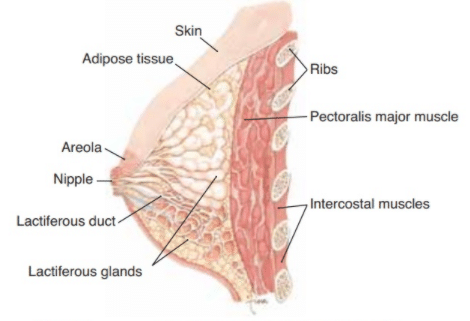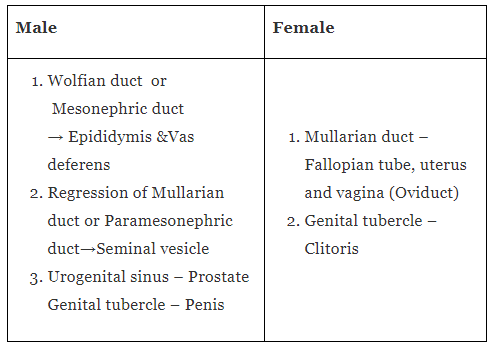Doc: Mammary Glands | Additional Study Material for NEET PDF Download
BREAST
Breast serves as a necessary reproductive organs in women. Human female possesses a pair of breasts containing mammary glands. These are situated in the front of the thorax on pectoral muscles. Each mammary gland has 15-20 tubulo-alveolar lobules contained in its connective tissue. The space between the lobules is filled with fatty tissue. The lobules contain milk glands in the form of bunches of grapes, which secrete milk. Numerous small ductules arise from each lobule, combine to form a lactiferous duct. Such lactiferous ducts open independently in the nipple.
 Fig: Mammary Gland
Fig: Mammary Gland
A nipple is a pigmented structure which is a elevated knob like structure at the apical part of mammary glands. The area adjacent to the nipples is also deeply pigmented, which is known as areola mammae. The area surrounding the nipples become much elevated because of the accumulation of fat and by the presence of muscles, Nipple is provided with about 15-20 small pores of 0.5 mm size. In men the nipples are vestigeal.
Mammary glands produce a nutritive fluid, milk for the nourishment of young ones. Milk protects the young ones from various infections upto some months after birth.

|
26 videos|312 docs|64 tests
|
FAQs on Doc: Mammary Glands - Additional Study Material for NEET
| 1. What are mammary glands? |  |
| 2. How many mammary glands do humans typically have? |  |
| 3. What is the function of mammary glands in non-lactating women? |  |
| 4. How do mammary glands produce milk? |  |
| 5. Can men have mammary glands? |  |






















